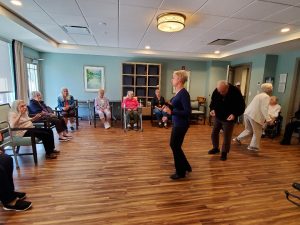Many of my clients ask me, “Andrea, is it ever too early to plan for a senior’s future care?” My answer is, “It is never too early.” Approximately, 90% of my clients contact me when there is a crisis with a senior loved. That includes situations where there was a life-changing event with the senior, or the children of the senior made an incorrect decision about the senior’s type of care. In light of the Coronavirus pandemic, I can only imagine how many people wished they had contacted a senior living professional to create a care plan for a loved. Despite the fact that the Center for Disease Control has issued guidelines that suggest that no one be allowed to visit senior loved ones except for essential employees, I would be less stressed knowing that my loved one was being cared for in a safe environment. Picture a situation where the senior may be living at home alone. The children may experience stress because they don’t know if the loved one is safe, receiving the right care, and eating properly. With the emphasis on social distancing, the tasks that the child must perform on behalf of the senior become all the more difficult. If the right plan of care was in place and acted upon prior to the pandemic, the stress involved with a crisis could be alleviated.
Most of the long-term care communities, including independent living, assisted living, memory care, and the skilled nursing homes have been abiding by the guidelines issued by the Center for Disease Control. Some of the senior living communities have elected to stay open, continue to do tours, and admit new residents. And while it is painful not to be able to see a senior loved one face-to-face, those communities that have abided by the guidelines have innovative ways of connecting the senior to his/her family. Many of the activity directors have gone door to door, arranging virtual meetings via Skype, Facetime, or Zoom between the seniors and their families. Don’t forget that if your loved one is in a skilled nursing home, you always have the right to request a care plan meeting with the nursing home staff to ensure that your loved one is receiving the appropriate care. If you have a special relationship with a Certified Nurses’ Assistant, you can ask him/her to connect you with a senior loved one via a cell phone.
At Andrea Donovan Senior Living Advisors, our process always includes a face-to-face assessment of the senior to determine his/her physical and mental capabilities. We will discuss whether placement in a senior living community or help at home is appropriate. The cost of senior care is astronomical so you cannot afford to make a mistake. That’s where we come in. Since we have toured and evaluated over 450 senior communities in the Chicago metropolitan area according to cost and method of payment, level of care, quality of care, staffing, food, and cleanliness, we direct you to no more than 3 or 4 senior housing options that fit your senior’s big picture! And since we are Certified Geriatric Care Managers, we will create and implement a care plan if the senior is to remain at home. And most importantly, we don’t accept any commissions from the communities or services that we present as options. We work for you and your loved one. Please stay safe!
 Chicago Senior Living Advisors Blog
Chicago Senior Living Advisors Blog


